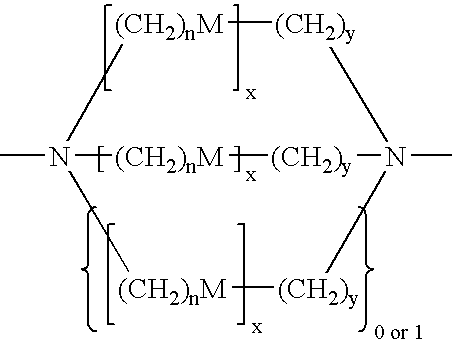Materials and methods of derivitzation of electrodes for improved electrical performance of OLED display devices
a technology of oled display device and electrode, which is applied in the direction of instruments, cell components, discharge tube luminescnet screens, etc., can solve the problems of insufficient electrical conductivity of organic layers, increased weight and additional manufacturing costs, and many problems of existing organic light emitting devices, etc., to facilitate molecular interaction and stability, and enhance the effect of emission si
- Summary
- Abstract
- Description
- Claims
- Application Information
AI Technical Summary
Benefits of technology
Problems solved by technology
Method used
Image
Examples
Embodiment Construction
[0014] Various embodiments of the invention relate to electrode modificationing molecules and organic light emitting devices including such light emitting molecules. Organic light emitting devices in accordance with various embodiments of the invention can offer a number of advantages, such as, for example, improved transport of electrical energy, improved robustness and thermal stability, improved visual characteristics, reduced energy requirements, reduced weight and lower manufacturing costs.
Definitions:
[0015] The following definitions apply to some of the elements described with regard to some embodiments of the invention. These definitions may likewise be expanded upon herein.
[0016] As used herein, “array” means an arrangement of more than one electrode modificationing molecule or pixel element. Arrays can be ordered, where the relative spacing between electrode modificationing molecules or pixel elements and / or relative alignment of electrode modificationing molecules or p...
PUM
| Property | Measurement | Unit |
|---|---|---|
| angle | aaaaa | aaaaa |
| angle | aaaaa | aaaaa |
| wavelengths | aaaaa | aaaaa |
Abstract
Description
Claims
Application Information
 Login to View More
Login to View More - R&D
- Intellectual Property
- Life Sciences
- Materials
- Tech Scout
- Unparalleled Data Quality
- Higher Quality Content
- 60% Fewer Hallucinations
Browse by: Latest US Patents, China's latest patents, Technical Efficacy Thesaurus, Application Domain, Technology Topic, Popular Technical Reports.
© 2025 PatSnap. All rights reserved.Legal|Privacy policy|Modern Slavery Act Transparency Statement|Sitemap|About US| Contact US: help@patsnap.com



